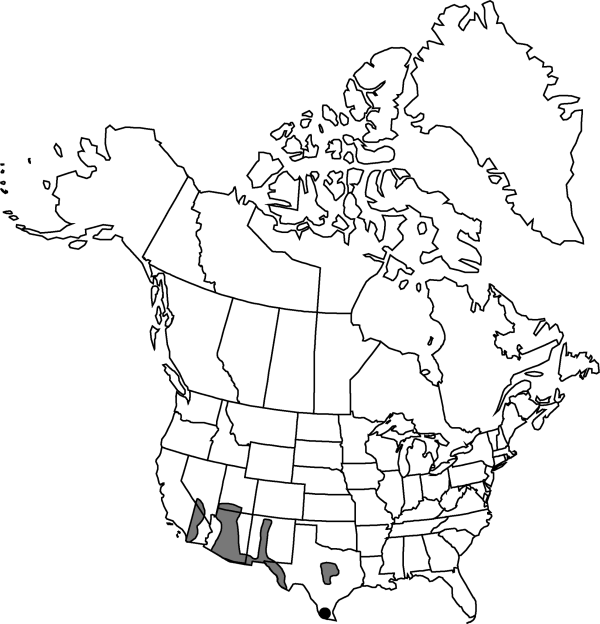Mollugo cerviana
in A. P. de Candolle and A. L. P. P. de Candolle, Prodr. 1: 392. 1824.
Plants erect, 3–20 cm. Leaves glaucous, in whorls of 4–12, basal rosette present; petiole 0.8–1.1 mm; blade linear to spatulate, 3–15 × 1–5 mm, base cuneate, apex acute to obtuse. Inflorescences: flowers in groups of 3–4 in stalked, axillary and terminal umbellate cymes. Flowers: sepals pale green, glaucous abaxially, white adaxially, elliptic to obovate, 1–1.5 × 1–1.6 mm, margins white, membranous; stamens 5, alternate with sepals; pedicel erect to spreading, 3–11 mm. Capsules subglobose, 1.5–1.8 × 1.5–1.9 mm. Seeds 20–40, brown, finely reticulate, 0.3–0.4 × 0.2–0.4 mm. 2n = 18.
Habitat: Open woodlands, dry sandy soils
Elevation: 400-2300 m
Distribution

Ariz., Calif., N.Mex., Tex., Utah, n Mexico, s Europe, s Asia, Africa, Australia.
Discussion
A specimen (in PH) of Mollugo cerviana is known as a waif from ballast in Philadelphia, Pennsylvania.
Mollugo cerviana is a weed of sandy places in tropical and subtropical regions around the world (T. S. Bakshi and R. N. Kapil 1954; V. V. Sivarajan 1988). It has been used in India to treat fevers, and post-partum discharges and to purify the blood (K. R. Kirtikar and B. D. Basu 1935). In Africa, it is dried, powdered, and burned, and put in incisions to treat pleurisy, and the leaves are chewed to treat coughs and reduce hangovers (H. M. Burkill 1985). The species does not compete well in crowded conditions (Bakshi and Kapil 1954). Several varieties have been described, but delimitation of the varieties is unclear and needs further study.